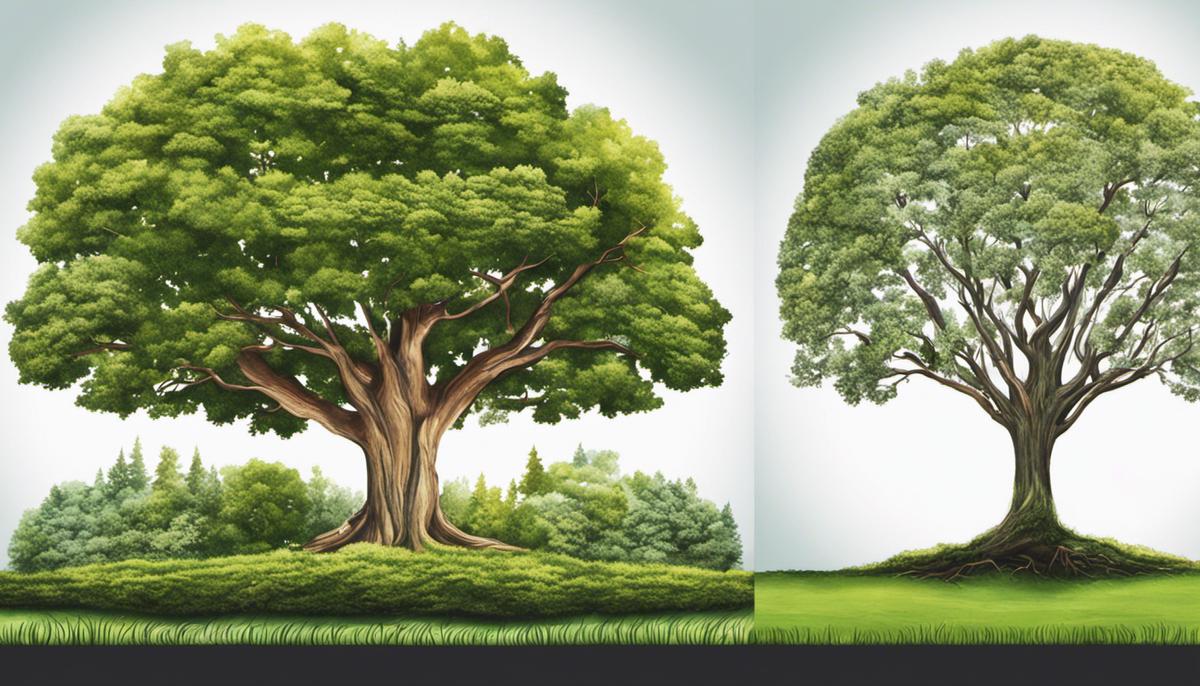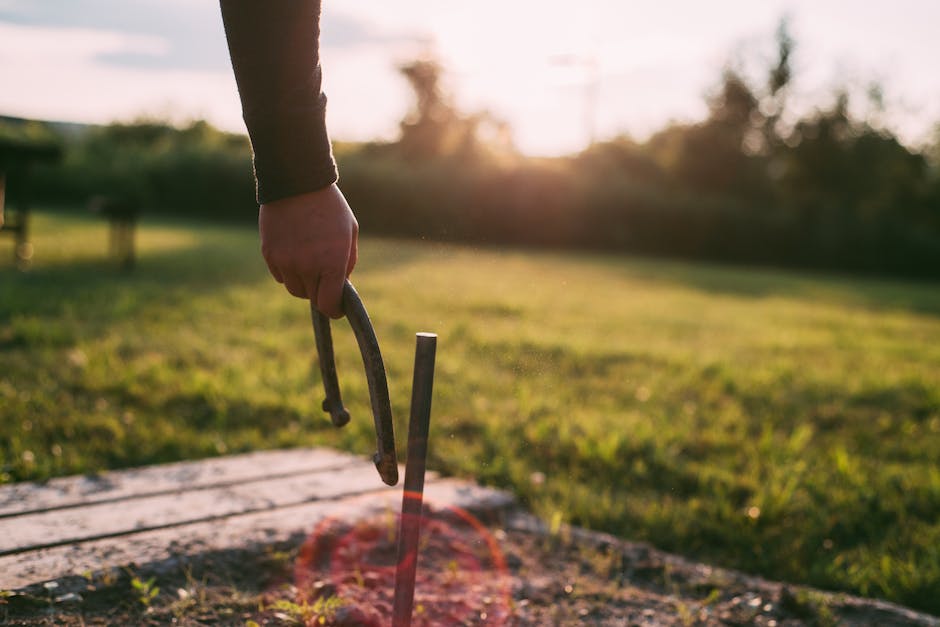Mastering the Art of Tree Straightening

Imagine a picturesque garden or a verdant park enhanced by robust, vibrant trees. These trees, whether evergreen or deciduous, provide not just the aesthetic appeal but also a multitude of environmental and health benefits. However, trees can be a cause for concern too, especially when you notice one tilting or leaning ominously. This deviation from vertical growth is an intriguing aspect of arboriculture that could pose certain risks – to the tree itself, and potentially to humans and property in its vicinity. This discourse will help you understand tree basics, identify leaning trees, gauge the severity of their lean, and arm you with knowledge about various techniques to straighten the tree safely.
Understanding Tree Basics
Dive into the Majestic World of Tree Growth and Development!
In the fascinating world of arboreal wonders, understanding the process of tree growth and development is like unlocking the secret language of our green friends. So, let’s launch right into this captivating topic!
First and foremost, grip the concept of a tree’s life cycle. It starts with a seed; nature’s compact package of potential. Given the right conditions – rich soil, ample sunlight, and ideal moisture – this seed begins to germinate, forming the radicle, which will eventually develop into the tree’s root system.
Soon after the formation of roots, the seed’s energy reservoir – the endosperm – kickstarts the growth of the shoot. The shoot, similar to an infant stretching its arms upwards, emerges out of the soil surface. This shoot, which begins its journey as a small sapling, is composed of two integral parts; the stem and leaves.
The stem, equipped with an internal transportation system, shuttles nutrients and water between the roots and the leaves. It forms the architectural base of the tree, contributing to its majestic height and providing support for the branches and leaves.
The real magicians, however, are the emerald-green leaves! Packed with chlorophyll, they initiate a beautiful process known as photosynthesis, producing glucose – the tree’s primary energy source – and pumping out oxygen, making our Earth livable.
As seasons change, trees continually adapt. Deciduous trees shed their leaves during the colder months to conserve water, while evergreen trees retain their foliage year-round, hence they’re always ‘evergreen’. Each tree presents a unique growth pattern, an enthralling blend of mathematical precision and artistic randomness.
One can’t discuss tree growth without highlighting the phenomenon of trunk expansion. This happens through the inimitable process of cell division in the cambium, a thin layer of tissue between the bark and the wood. New cells produced form layers of wood and bark, causing the trunk to expand and form tree rings, which can be studied to determine the tree’s age and past environmental conditions.
In the context of branches, did you know trees follow a “divine” principle? They usually adhere to something called the ‘Fibonacci principle’. It helps in optimizing light absorption by ensuring minimal overlapping of leaves. Think of it as the tree maximising its solar panel utility!
Lastly, reproduction plays a pivotal role in the tree’s life cycle. It involves the production and dispersal of seeds, either through cones in gymnosperms or fruits in angiosperms. Birds, wind, water, and even gravity greatly assist in seed dispersal, ensuring the continuation of the tree lineage.
In the grand symphony of nature, understanding the basics of tree growth and development is like learning the opening notes. Embrace the fascinating narrative of these silent contributors to our ecosystem, and next time you find yourself under a leafy canopy, you’ll appreciate the marvel that is tree growth.

Identifying Leaning Trees

Straightening Techniques
Picking up from where we left off, let’s delve deeper into how to straighten a leaning tree. First things first, recognition and understanding form a crucial foundation. Having grasped the potential reasons behind a tree’s lean, we can now focus on rectifying it with suitable techniques devised over many years by devoted tree enthusiasts.
One of the most prevalent techniques to alleviate tree leans is tree staking. This method secures the tree using supports or “stakes” inserted into the ground. The tree is then fastened to these stakes with the help of flexible ties. The ties are turbulent enough to prevent the tree from toppling over while simultaneously allowing a moderate amount of sway, promoting healthy response growth. Valuable tip: Make sure not to tie the tree too tightly to the stakes to avoid damaging the bark or interfering with trunk growth.
Another effective option that often goes hand in hand with staking is mulching. Mulching’s prime function is to aid the tree’s root development by preserving soil moisture and inhibiting competitive weeds. A well-nourished root system is bound to support a robust and upright tree structure. The mulch should be applied in a circular area around the tree, be sure not to mound it against the trunk, which could lead to rot.
Moving on to a slightly more advanced method, soil replacement or modification can significantly improve the stability of a leaning tree. This technique is particularly effective if the leaning has been caused by poor soil conditions. The process involves replacing the unfit soil with more suitable, often nutrient-rich soil, providing an improved environment for the tree’s root growth.
In certain circumstances, tree pulling might be necessary. This method should only be undertaken with proper guidance or by professionals, as it involves a fair amount of force and can potentially harm the tree if carried out improperly. Using cables and winches, the tree is gently pulled upright and then held in place using stakes or braces until it manages to sustain its rectified position independently.
Lastly, prudent and regular tree pruning can significantly affect a leaning tree. Strategic pruning, primarily of the leaning side, can help redistribute the tree’s weight and promote symmetrical growth. However, only prune during the dormant season to minimize stress inflicted upon the tree.
Remember, patience is key! The process of straightening a leaning tree extends over a considerable period, requiring consistent effort and care. Don’t be discouraged if immediate results are not visible, as trees are resilient beings and often just need time to adjust. Remember that safety should never be compromised and do not hesitate to seek assistance when in doubt. Engage with the green thumbs community for varied perspectives and solutions. Here’s to a path towards straight, strong, and resilient trees!
Now, let the tree-straightening adventure commence! Be it stakes or soil enhancements, always remember: fortitude and care are stalwarts in the journey towards arboreal perfection. Stand tall, tree enthusiasts!

After becoming conversant with the growth and development cycles of trees, you will understand that a lean is not always harmful. But some leaned trees do require your immediate attention. Identifying and assessing the severity of a tree’s lean is a crucial ability in mitigating potential risks. In situations that necessitate intervention, you can employ a variety of straightening techniques including staking, guying or using braces and splints. The key lies in applying just the right amount of force and leaving the supportive mechanisms in place for an appropriate period. By educating ourselves about these aspects, we all can play decisive roles in maintaining the health, longevity and integrity of the trees around us, making our surroundings more secure and beautiful.



